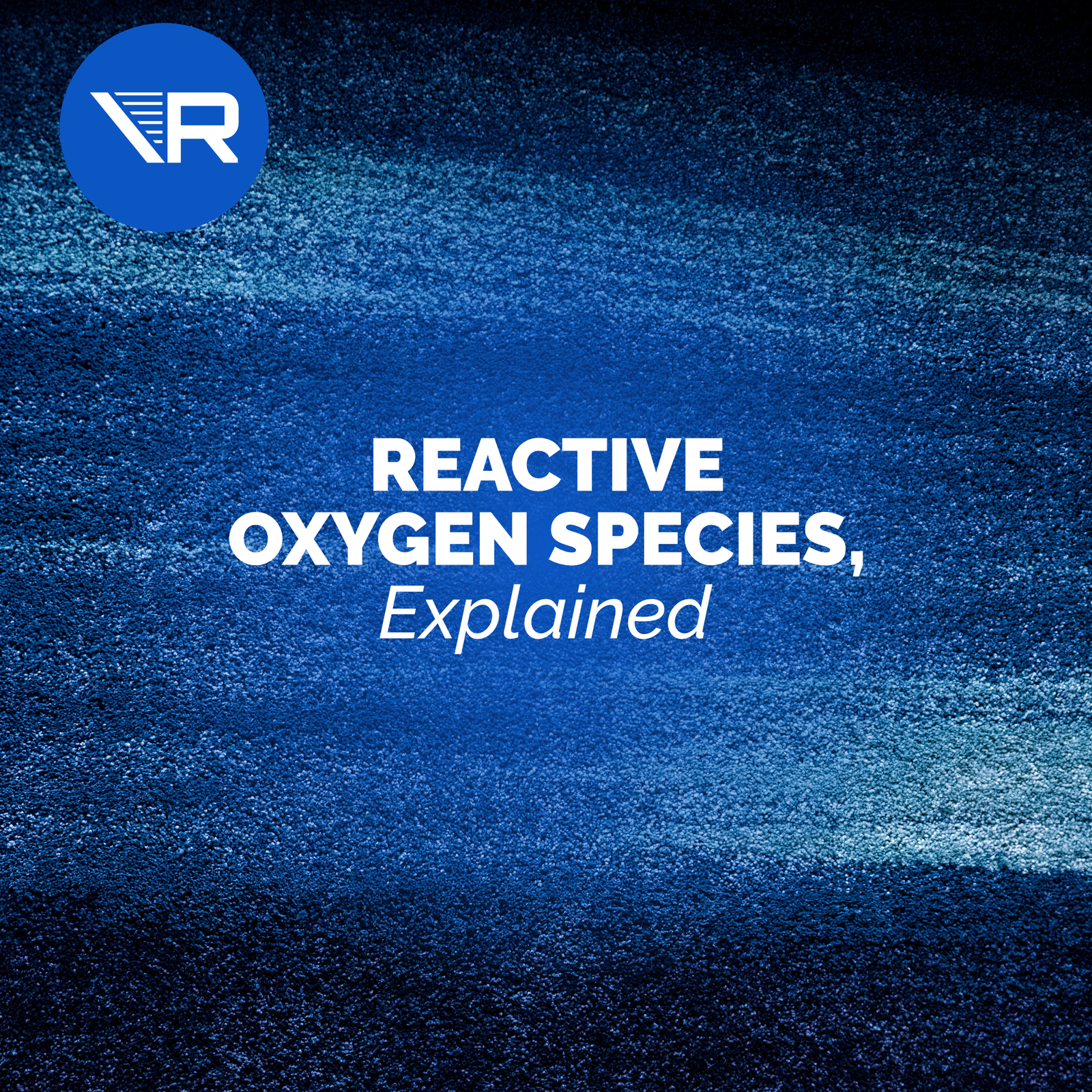
Pain and inflammation go hand and hand, and Molecular Hydrogen plays a tremendous role in controlling these conditions. In this post, we’ll learn about:
- Inflammation and pain
- How inflammation opens doors to disease
- Molecular Hydrogen’s anti-inflammatory and central sensitization properties
Let's dive right in.
What is Inflammation?
Before we get anywhere, I think that it’s important that we establish some context around exactly what inflammation is. “Inflammation” has become a pretty loaded term in the discussion around health and wellness, with a lot of so-called health gurus citing it as the source of all that’s bad in this world, without really understanding what the process actually entails.
It’s analogous to the vast swaths of consumers blindly purchasing gluten free goods, without having a clue as to what gluten is and why they should or should not be avoiding it.
Source: https://tenor.com/search/this-is-the-end-gluten-gifs
Source: https://tenor.com/search/this-is-the-end-gluten-gifs
Before we get anywhere, I think that it’s important that we establish some context around exactly what inflammation is. “Inflammation” has become a pretty loaded term in the discussion around health and wellness, with a lot of so-called health gurus citing it as the source of all that’s bad in this world, without really understanding what the process actually entails.
It’s analogous to the vast swaths of consumers blindly purchasing gluten free goods, without having a clue as to what gluten is and why they should or should not be avoiding it.
Let’s get one thing straight. Inflammation is not inherently bad. A pathophysiology teacher once explained to me that another word we could easily substitute for inflammation is “healing.”
Inflammation is basically our body’s response to injury, either real or perceived. This could be from direct trauma, like cutting your finger, an outside invader like a bacteria or virus, or a reaction to something you ate, like that McDonald’s cheeseburger.
Source: https://socratic.org/questions/what-are-the-four-cardinal-signs-of-inflammatory-response
The hallmark signs of inflammation are:
-
Rubor (redness)
-
Tumor (swelling)
-
Calor (heat)
-
Dolor (pain)
-
Functio Laesa (loss of function)
All of these signs are indicators of what’s happening at a cellular level. You get redness because of increased blood flow to the area of injury. Swelling occurs because the inflammatory process makes our blood vessels more permeable, so that white blood cells and other inflammatory mediators can leave the blood vessels and get where they need to go.
Source: https://socratic.org/questions/what-are-the-four-cardinal-signs-of-inflammatory-response
The hallmark signs of inflammation are:
-
Rubor (redness)
-
Tumor (swelling)
-
Calor (heat)
-
Dolor (pain)
-
Functio Laesa (loss of function)
All of these signs are indicators of what’s happening at a cellular level. You get redness because of increased blood flow to the area of injury. Swelling occurs because the inflammatory process makes our blood vessels more permeable, so that white blood cells and other inflammatory mediators can leave the blood vessels and get where they need to go.
The temperature gets elevated to speed up the rate of chemical reactions. We feel pain because some of the inflammatory mediators stimulate our sensory nerves, to let us know that something is wrong in the area.
Loss of function depends on the extent of the injury. Think of it as “closed for maintenance.”
How Does Inflammation Lead to Disease?
In normal circumstances, everything works in balance. An injury occurs, the inflammatory process is initiated, we send blood filled with white blood cells to the site of injury. Removal of debris and repair of tissue is initiated until everything is all patched up and the system shuts down.
As simple as it may sound, this process is mind-bogglingly complex, carefully orchestrated by the interplay of hundreds (that we know of) chemical mediators.
These chemical mediators exist in a delicate balance, and are generally regulated by negative feedback loops.
One of the classic examples to explain a negative feedback loop is to think of a thermostat. When the temperature drops, the heat kicks in, and stays on until the set temperature is reached. The result of the heat being on triggers the event that turns the heat off. Negative feedback.
The inflammatory process works similarly...the byproducts or results of cellular processes are typically the triggers that turn those processes off.
But what happens if there’s a problem?
What if your heater breaks, and your system is just pumping out cold air? The thermostat is going to keep dropping, which is going to make the air keep blowing, which is going to cause the temperature to continue to plummet. This is a positive feedback system; the result of a process triggers that process to continue.
There are a couple of cases in normal physiology that are governed by positive feedback (such as oxytocin release during breastfeeding) but in general positive feedback is a result (and/or cause of) of pathology.

Source: https://www.pinterest.com/gbrooks1222/ros/
This is what happens in states of chronic inflammation. The system gets overwhelmed, causing a breakdown in one or more of the regulatory pathways.
This can happen for a variety of reasons: viral infection, genetic susceptibility, poor diet, exposure to environmental toxins, insufficient sleep, etc. The list goes on.
As it turns out, some of the critical main modulators of inflammatory activity are reactive oxygen species (ROS) (and to a smaller extent, reactive nitrogen species (RNS)). ROS are free radicals, which may be produced as a waste byproduct of the inflammatory processes, or can play a direct role in healing, and are even produced directly by some of our cells to kill foreign invaders. The presence of these ROS signal other cellular processes to either turn on or off.
There are no problems as long as these ROS are kept carefully contained...it’s like working with a blowtorch...you need it to get the job done, but you don’t want to set your house on fire. We have an internal network of antioxidants that we produce alongside the ROS to keep things under control.
But what happens if this balance is disrupted?
In chronic inflammatory states, we produce more ROS than our antioxidant system is able to keep up with. The presence of an abnormally high number of ROS triggers other inflammatory mediators which trigger the release of more ROS...positive feedback.
Plus, all of these un-contained free radicals now start to cause cellular damage, which initiates even more inflammation. Most (if not all) chronic inflammatory diseases are characterized in part by unusually high concentrations of ROS and corresponding signs of oxidative damage.
Molecular Hydrogen and Inflammation
This is where molecular hydrogen appears to function in an anti-inflammatory capacity, and in fact may be superior to other anti-inflammatory interventions. Studies have shown that other antioxidants can combat inflammation, we believe through neutralization of free radicals.
However, these other antioxidants are not selective, and so they neutralize not only the harmful free radicals, but also the beneficial ROS that are serving as intracellular signalling molecules. As a result, while they were effective as anti-inflammatories in the short-term they had to be
A.) Frequently re-administered (with a big needle) either intraperitoneally (into your abdominal cavity) or intrathecally (into the fluid filled sack containing your spinal cord)
And...
B.) Caused unwanted downstream side effects due to the neutralization of beneficial ROS.
This is where molecular hydrogen stands out. Molecular hydrogen is SELECTIVE. It selectively targets the hydroxyl radical, which:
-
Appears to serve no beneficial purpose
-
Is extremely toxic to our cells
-
Is present in high amounts in most (if not all) chronic disease
-
Is not targeted by any endogenous antioxidant
Also, molecular hydrogen activates the NRF2 pathway. This is one of our body’s master anti-inflammatory regulators, which works in no small part through the activation of our homegrown antioxidant system- so it helps restore balance to the force, if you will.
What’s even better is that hydrogen appears to work if taken orally (no repeated stomach or spinal injections necessary, whew!) and the benefits are longer-lasting than other antioxidants as well.
Finally, there have been no observed side effects with any of the hydrogen intervention studies.
What About Pain?
Ok- so that’s inflammation in a nutshell. Where does pain fit in?
Not to be glib, but pain is complicated. In fact, when we’re talking about physiology like this, we don’t even like to use the word pain, because “pain” is extremely subjective. A better word to use is nociception.
A nociceptor is a specific kind of sensory receptor that transmits the kind of sensory information that our brain interprets as pain. Put another way, pain is a subjective experience of nociception.
We have different kind of nociceptors that interpret different kinds of sensory information, such as mechanical tissue damage, temperature, chemical signals, etc. Pain and inflammation are inseparably linked because pain is part of the inflammatory process. Certain inflammatory mediators (bradykinin, for example) directly stimulate nociceptors.
Conversely, nociception can trigger an inflammatory cascade. So inflammation causes nociception, and vice versa.

Source: https://www.psychology.org.au/inpsych/2016/august/nicholsonperry

Source: https://www.psychology.org.au/inpsych/2016/august/nicholsonperry
Ok- so that’s inflammation in a nutshell. Where does pain fit in?
Not to be glib, but pain is complicated. In fact, when we’re talking about physiology like this, we don’t even like to use the word pain, because “pain” is extremely subjective. A better word to use is nociception.
A nociceptor is a specific kind of sensory receptor that transmits the kind of sensory information that our brain interprets as pain. Put another way, pain is a subjective experience of nociception.
We have different kind of nociceptors that interpret different kinds of sensory information, such as mechanical tissue damage, temperature, chemical signals, etc. Pain and inflammation are inseparably linked because pain is part of the inflammatory process. Certain inflammatory mediators (bradykinin, for example) directly stimulate nociceptors.
Conversely, nociception can trigger an inflammatory cascade. So inflammation causes nociception, and vice versa.
There’s one particular type of sensory fiber that’s particularly associated with chronic pain, called C fibers. These are large, unmyelinated nociceptive fibers that are particularly sensitive to chemical stimuli.
Guess what particular stimuli lights them up like a Christmas tree?
If you guessed reactive oxygen species, you’re right.
More ROS = more pain.
There’s another important chronic pain piece here as well. Let’s talk about the spinal cord for a second.
The spinal cord acts as a master relay between the brain and the peripheral nervous systems. At each spinal level, we have large nerve roots, that split up into smaller nerves as they travel into the periphery. These nerves are how information travels from the brain to the periphery and vice versa.
At each spinal level the nerve splits into a dorsal (back) root and ventral (front) root before coming together to form the spinal nerve.

Source: https://courses.lumenlearning.com/ap1x94x1/chapter/the-spinal-cord/
Essentially motor information travels out through the anterior root, and sensory information travels to the cord through the posterior root. Near where each posterior root meets the spine is a bulbous structure called the dorsal root ganglion.
This is a collection of sensory cell bodies, and is loaded with...you guessed it: ROS sensitive C fibers.
Chronic Pain and Central Sensitization
One of the major factors in chronic pain is a phenomenon we call central sensitization. Basically this is when, at the cord level, our bodies become overly sensitized to nociceptive inputs. This results in a couple of phenomenon called allodynia and hyperalgesia.
Allodynia is when we perceive an innocuous stimulus as painful.
Hyperalgesia is when our threshold for pain is lowered, i.e. the level of pain we experience is disproportionate to the level of nociceptive stimulation.
(Incidentally, central sensitization is a common side effect of long-term opioid use.)
We call this kind of pain neuropathic pain, because it’s coming from stimulation of nociceptive fibers unrelated to any external insult.
Anyway, the reason we’re discussing all this is because central sensitization appears to be modulated by hyperactive C fibers. And while the exact mechanism is not yet understood, it appears that reactive oxygen species, in particular the hydroxyl radical (OH-) play a major role in the sensitization process.
Hydrogen Rich Water Prevents Central Sensitization
In a study looking at neuropathic pain in mice, researchers found that water with molecular hydrogen tablets added could both prevent and treat both allodynia AND hyperalgesia. Interestingly, the hydrogen was most effective for reducing allodynia if given early in the study, reinforcing the idea that it plays an important role of preventing central sensitization. Hyperalgesia was improved no matter when the hydrogen was administered, and benefits for both lasted even after hydrogen administration had ceased.
SO...molecular hydrogen has an important role to play in the prevention of chronic pain, by neutralizing the specific causative free radical, AND in pain management through mitigation of inflammation and direct removal of reactive oxygen species that are stimulating C fibers.
A number of studies have found that molecular hydrogen could potentially slow and even prevent the progression of painful inflammatory diseases like rheumatoid arthritis.
If you or someone you know is dealing with chronic pain and/or inflammation, it is definitely worthwhile to do a trial of molecular hydrogen therapy and see if you notice any benefits.
With our money back guarantee, there’s no risk to trying Vital Reaction molecular hydrogen today.
Have you had experience with hydrogen therapy for pain and inflammation? We want to hear about it! Please share in the comments below!




Deborah Medina
July 27, 2020
If I understand correctly this, for a lack of a better word, therapy could stop neuropathy. Plenty of my siblings, 1st,2nd,3rd cousins have idiopathic neuropathy.
Please respond as soon as you can. Thank you.